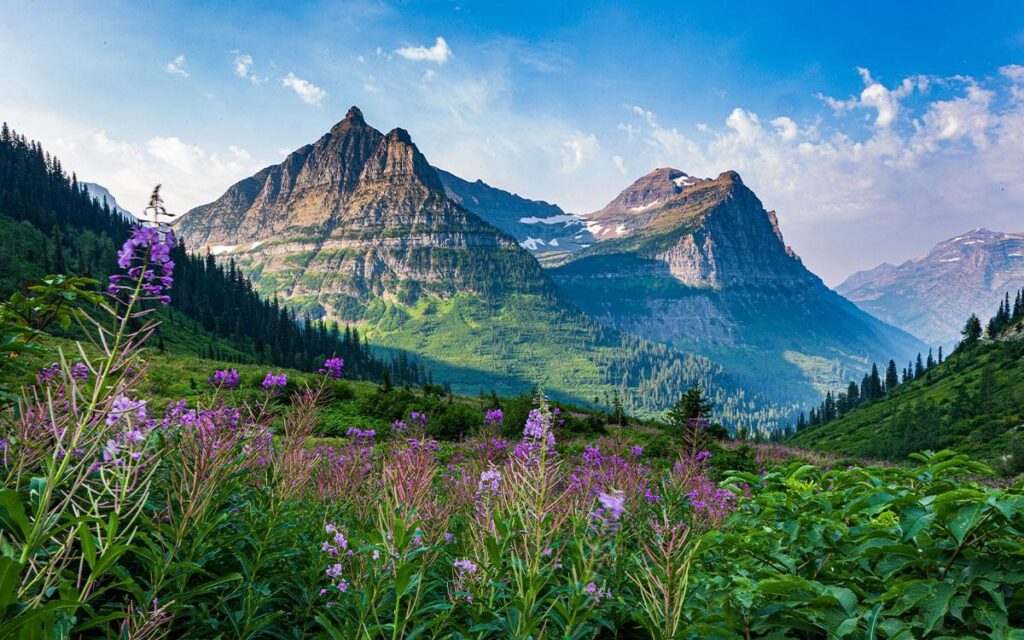Eight Books and Films That Will Transport You to America’s Most Iconic Landscapes

Glacier National Park. | Photo by Pascal Walschots
More than 640 million acres of land in the United States belong to the American public, including over 400 national parks, 560 national wildlife refuges, and 154 national forests. These lands are integral to the country’s landscape, identity, and culture, serving as places of recreation, wildlife protection, and climate change mitigation.
National Public Lands Day, started in 1994 and now led by the National Environmental Education Foundation, celebrates these landscapes with outdoor events and volunteer opportunities. This year, it falls on September 28, offering a chance to learn more about our shared lands, their histories, and futures.
While these lands are celebrated, they also have complex pasts and face threats from development and climate change. The following books and documentaries explore the stories of Indigenous peoples, battles over public lands, and the impacts of climate change. They also highlight the beauty and wonder of these spaces.
Saving Yellowstone: Exploration and Preservation in Reconstruction America by Megan Kate Nelson
Simon and Schuster, 2022

A grizzly bear in Yellowstone National Park. | Photo Krista Taylor
Saving Yellowstone by historian Megan Kate Nelson explores the creation of America’s first national park during the Reconstruction era, focusing on figures like Lakota leader Sitting Bull, financier Jay Cooke, and explorer Ferdinand Hayden.
Understory: A Journey Through the Tongass

Tongass National Forest. | Photo by Carlos Rojas
The Tongass National Forest, the world’s largest temperate rainforest, faced logging threats in 2020. In response, local fisher Elsa Sebastian, biologist Natalie Dawson, and illustrator Mara Menahan documented the forest’s landscape and communities in the documentary Understory.
Brave the Wild River: The Untold Story of Two Women Who Mapped the Botany of the Grand Canyon by Melissa L. Sevigny
W.W. Norton, 2023

Grand Canyon National Park. | Photo by Alan Majchrowicz
Brave the Wild River tells the story of botanists Elzada Clover and Lois Jotter, who in 1938 sailed down the Colorado River to catalog its flora, facing the challenges of female scientists in the 1930s.
The Song of Everything: A Poet’s Exploration of South Carolina’s State Parks by Glenis Redmond
Good Printed Things, 2024

Caesars Head State Park, Blue Ridge Escarpment, Table Rock. | Photo by John Coletti
Poet Glenis Redmond visited 20 of South Carolina’s state parks with her grandson after receiving a cancer diagnosis, capturing the experience in her collection of poems, The Song of Everything.
This Land

Hyatt Lake Recreation Area, Cascade-Siskiyou National Monument, Oregon. | Photo by Kyle Sullivan/BLM
In the This Land documentary, athlete Faith E. Briggs runs through national monuments, raising awareness about public lands and examining access issues. Briggs navigates her identity as a Black conservationist, aiming to show that everyone is welcome outdoors.
The Melting World: A Journey Across America’s Vanishing Glaciers by Christopher White
St. Martin’s Press (MacMillan), 2013

Glacier National Park. | Photo by Pascal Walschots
Christopher White’s The Melting World documents the rapid melting of Montana’s glaciers, capturing the impact of climate change on Glacier National Park through the work of climate scientist Dan Fagre.
The Unlikely Thru-Hiker: An Appalachian Trail Journey by Derick Lugo
Appalachian Mountain Club, 2019

Shenandoah National Park. | Photo by John Baggaley
Derick Lugo’s memoir, The Unlikely Thru-Hiker, recounts his journey on the Appalachian Trail, addressing race and the outdoors while sharing his experiences and lessons learned.
Gladesmen: The Last of the Sawgrass Cowboys

Everglades National Park. | Photo by James Keith
The Gladesmen documentary explores the tension between conservation efforts and airboating communities in the Florida Everglades, highlighting the complexities of protecting fragile ecosystems while respecting local traditions.
Original Story at www.sierraclub.org
